Tips for organising kitchen drawers - 12 ways to banish clutter for good
Declutter and organise kitchen drawers for a better working relationship with your kitchen
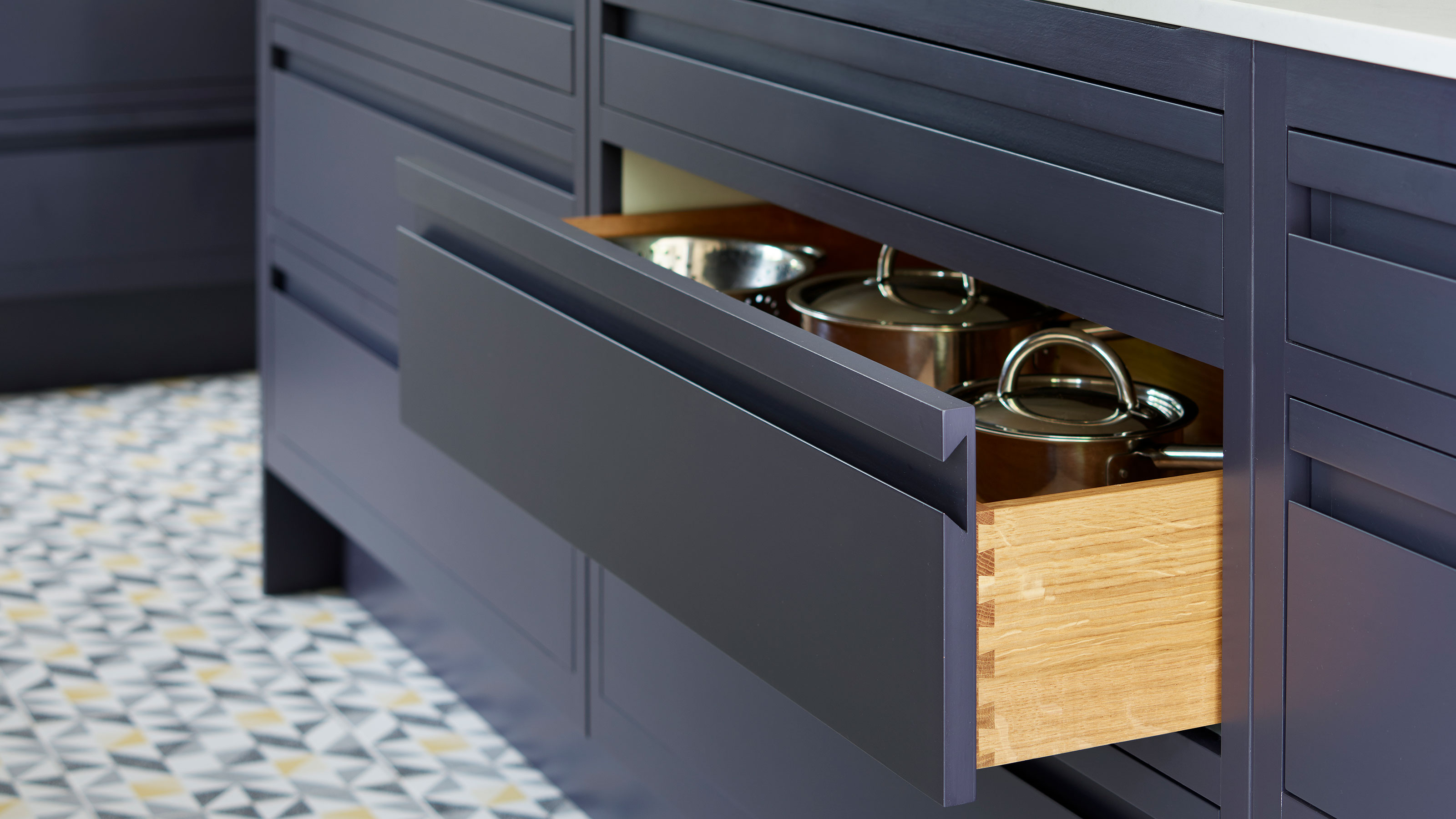

We all know that the key to a functional kitchen is organisation, but it’s easy to let things slip. If you’re fed up with cooking in a cluttered space then it’s time to think about organising kitchen drawers. You might also want to look at organising kitchen cabinets first, before tackling your drawers.
‘It’s important that all the elements of the kitchen work seamlessly so I would always allocate drawers in functional areas. Drawers are top-access, easy to see into and easier to use,’ says Julie Otulakowski, Kitchen Designer at Art House Creative Interiors. ‘They also allow for perfect arrangement with functional dividers and organisational solutions.’
So whether you want to get the design of a new kitchen just right, or need to implement efficient ways for organising kitchen drawers you have, we’ve gathered our top tips, as well as some expert advice, to get you heading in the right direction. One thing is for sure, drawers are no longer just a place to store your utensils.
How to get started
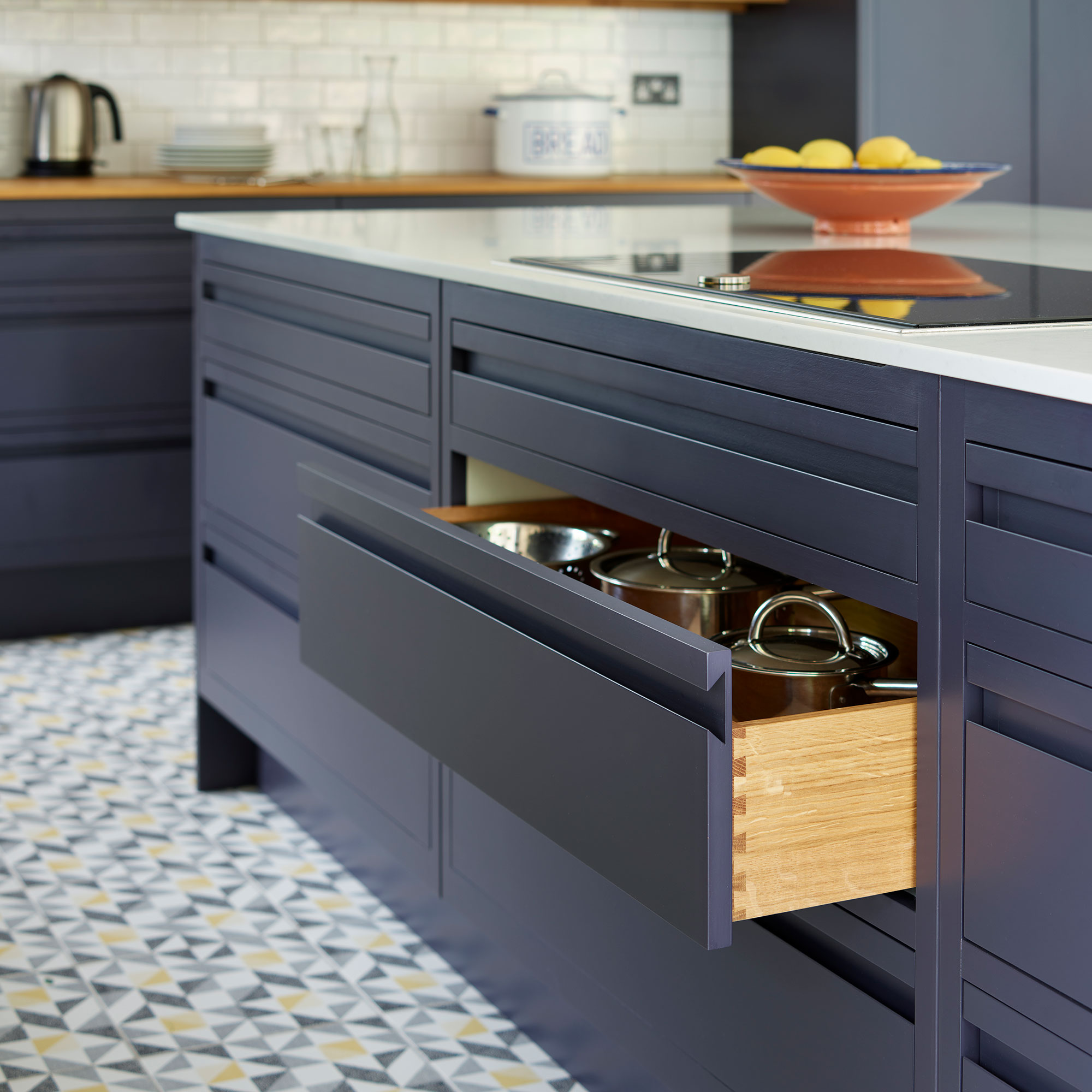
The first step to beautifully organised kitchen drawers is to have a good clear out. When thinking about how to organise a small kitchen (or any sized kitchen!) it's about planning out what should live where. Follow these easy steps to help you to get ready to sort your drawers.
- Take everything out Taking everything out of the drawers will allow you to see the space you currently have and what you might need going forwards.
- Refine your collection Think of drawers in the same way you would your wardrobe – anything that hasn’t been used in a year (seasonal items aside), can be put in the charity bag. ‘I’m a big fan of Marie Kondo,’ says Melissa Klink, Creative Director at Harvey Jones. ‘Well worth a watch/listen/read to help you hone in on what you really need and make space for a more practical kitchen.’
- Take photos This will act as a good reminder of what you need to house when organising kitchen drawers. ‘The most important thing is to be honest with your designer and not to be shamed by your current kitchen,’ says Melissa. ‘Take pictures of your current drawers, and what’s on the worktops that could be in drawers.
- Measure up Measure the depth, width and height for each drawer, then find drawer inserts that will fit in the space. Refer to the snaps you’ve taken of your belongings as a reminder.
Expert tips for organising kitchen drawers
Follow these clever kitchen storage ideas and tips for super-organised drawers that make kitchen clutter a thing of the past.
1. Keep regularly used items to hand
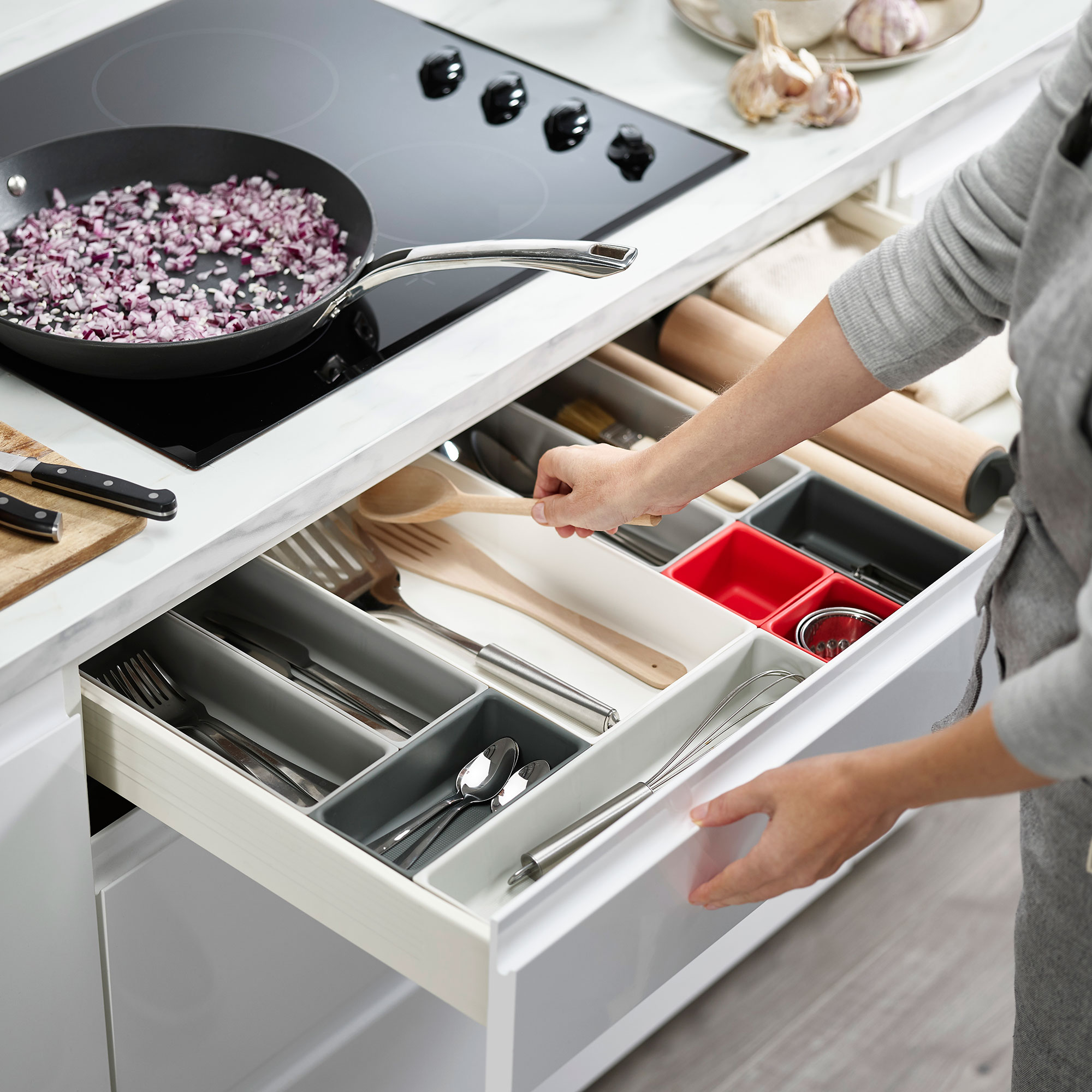
For a kitchen to flow seamlessly, keep your everyday items to hand when organising kitchen drawers. House frequently used utensils in a drawer next to the hob, and most-used cookware within easy reach, keeping in mind whether you are right or left handed. Keep items neatly sorted with an organiser like the Blox™ 10-piece drawer organiser set, £30, Joseph Joseph
2. Zone your work space
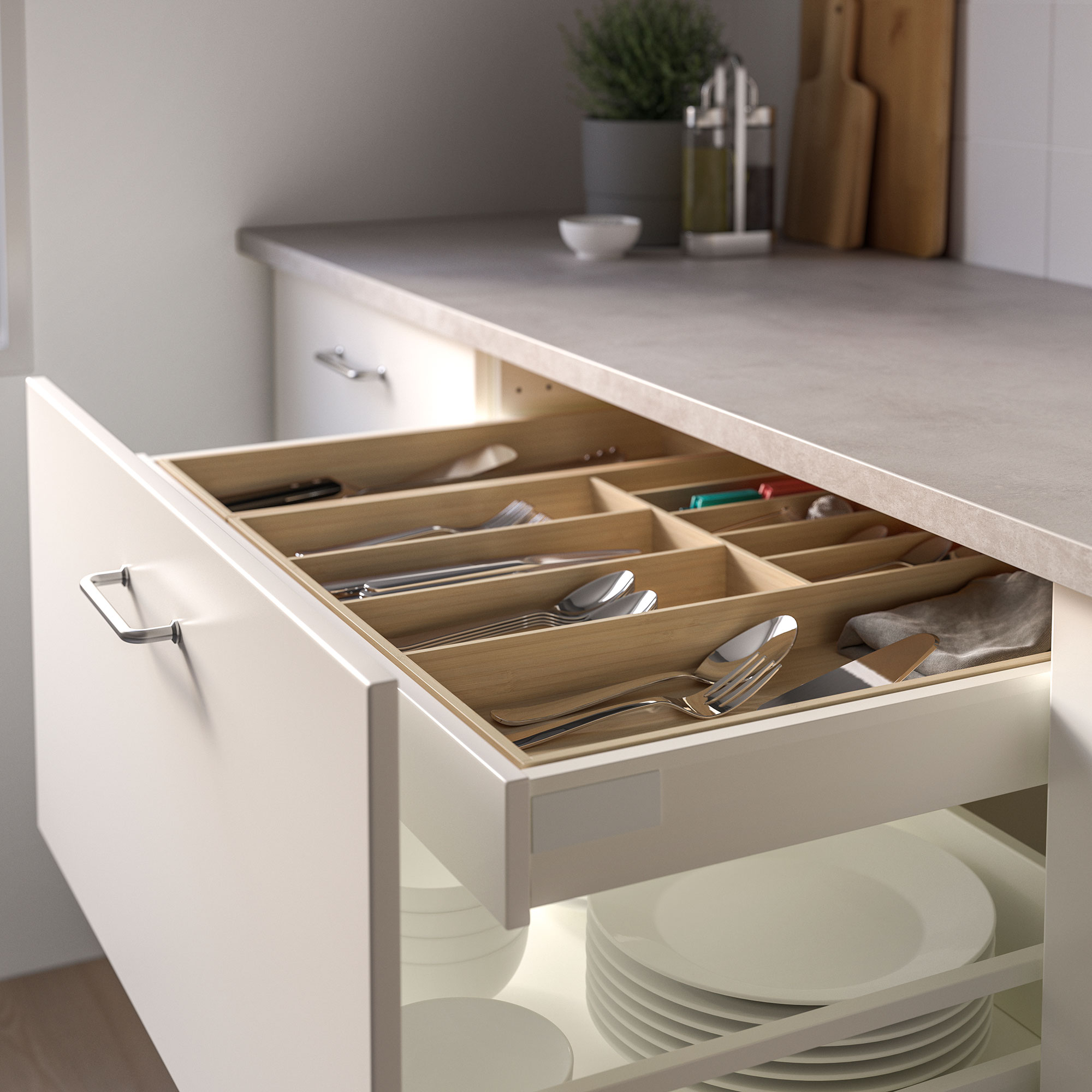
Think about how you could benefit from different zones. A drawer beneath where the toaster and kettle are situated could house breakfast essentials to speed up the morning rush, or a serving zone with chinaware beneath where you plate up would be handy for entertaining. Use systems such as the Uppdatera cutlery tray in light bamboo, £25, IKEA to make it easier to keep drawers tidy.
Get the Ideal Home Newsletter
Sign up to our newsletter for style and decor inspiration, house makeovers, project advice and more.
3. Dedicate deep drawers to pans
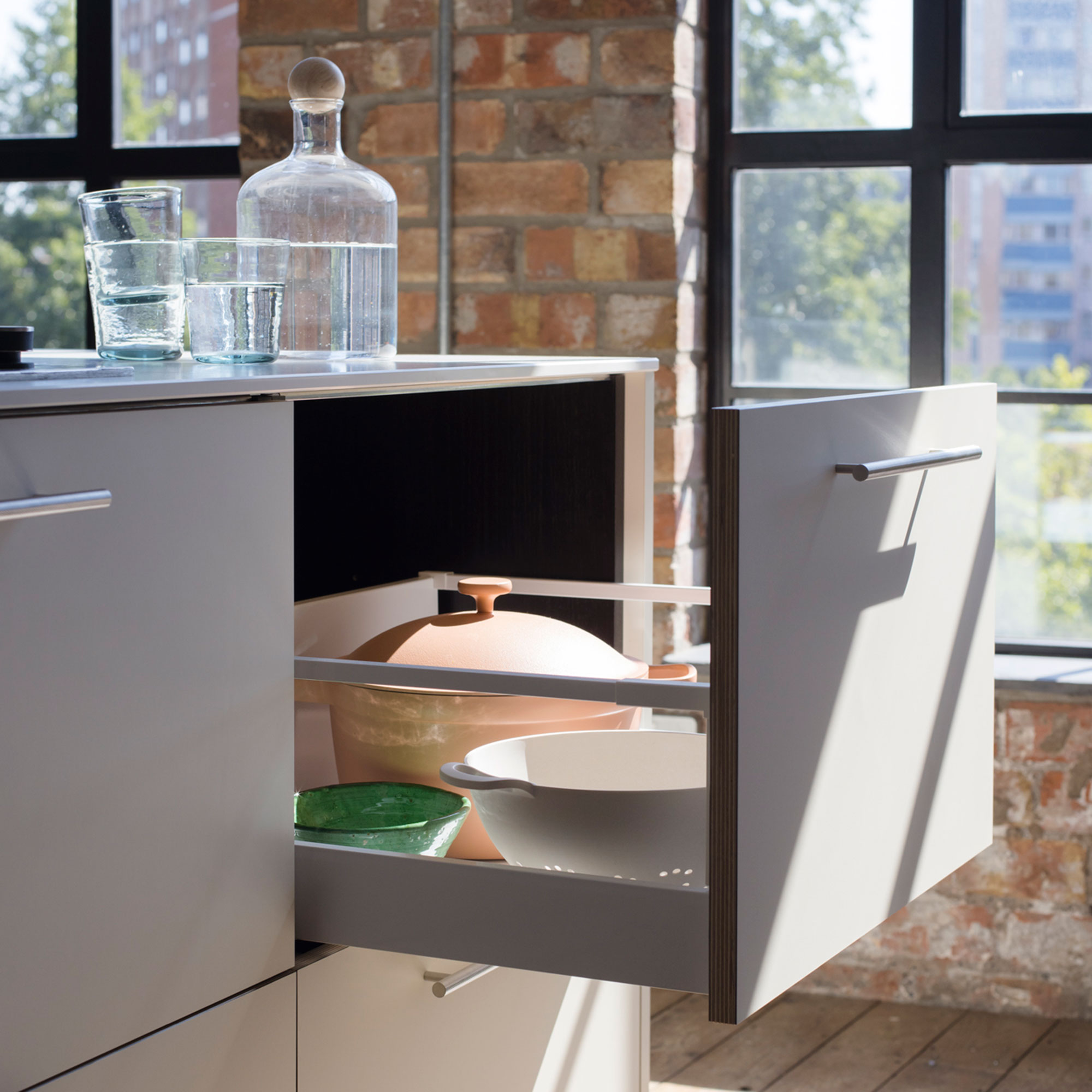
Deep drawers are easily accessible for heavy pots and pans. Store them with the lids on top to stack them or consider a shallow, graduated drawer above for storing lids separately. Look at stacking or vertical pan racks to prevent scratching, or consider pan protectors between each one.
Natura in Linen door fronts, from £1,500 for fronts only, Husk Kitchens. Hardware, Plank.
4. Stack tableware in a deep drawer
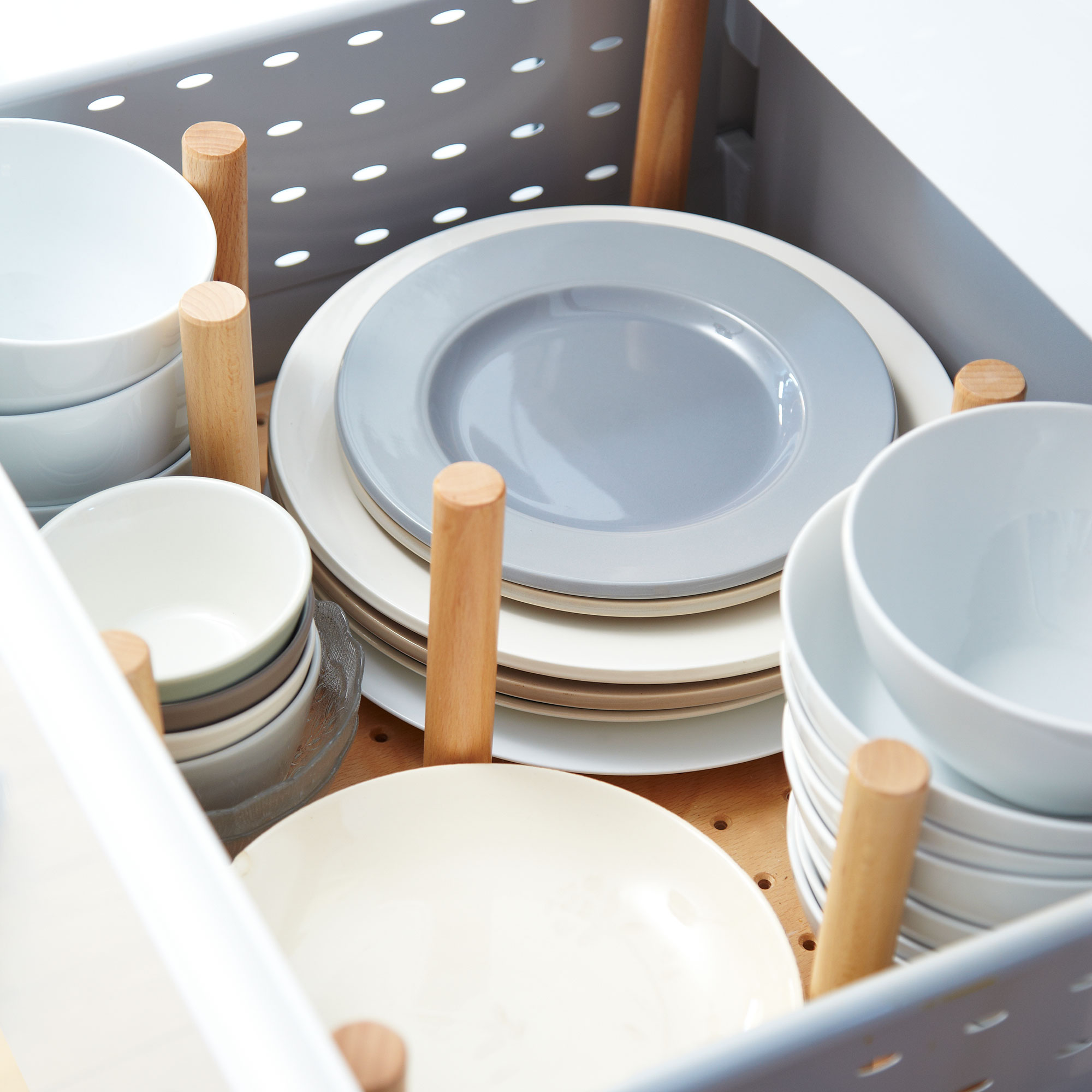
Deep drawers are also the ideal home for dinner plates and bowls. Separate each set with a divider, to prevent them sliding into each other. A great hack is to line the bottom of the drawer with a peg board, then use the dowels to separate each stack, adjusting them as you need to when reorganising.
Avoid cracks by keeping each stack to around 8 dinner plates, depending on how robust they are. The centre of the plate is its weakest point, so if you over-stack, that’s a lot of pressure on the bottom plate.
5. Use dividers in utensil drawers
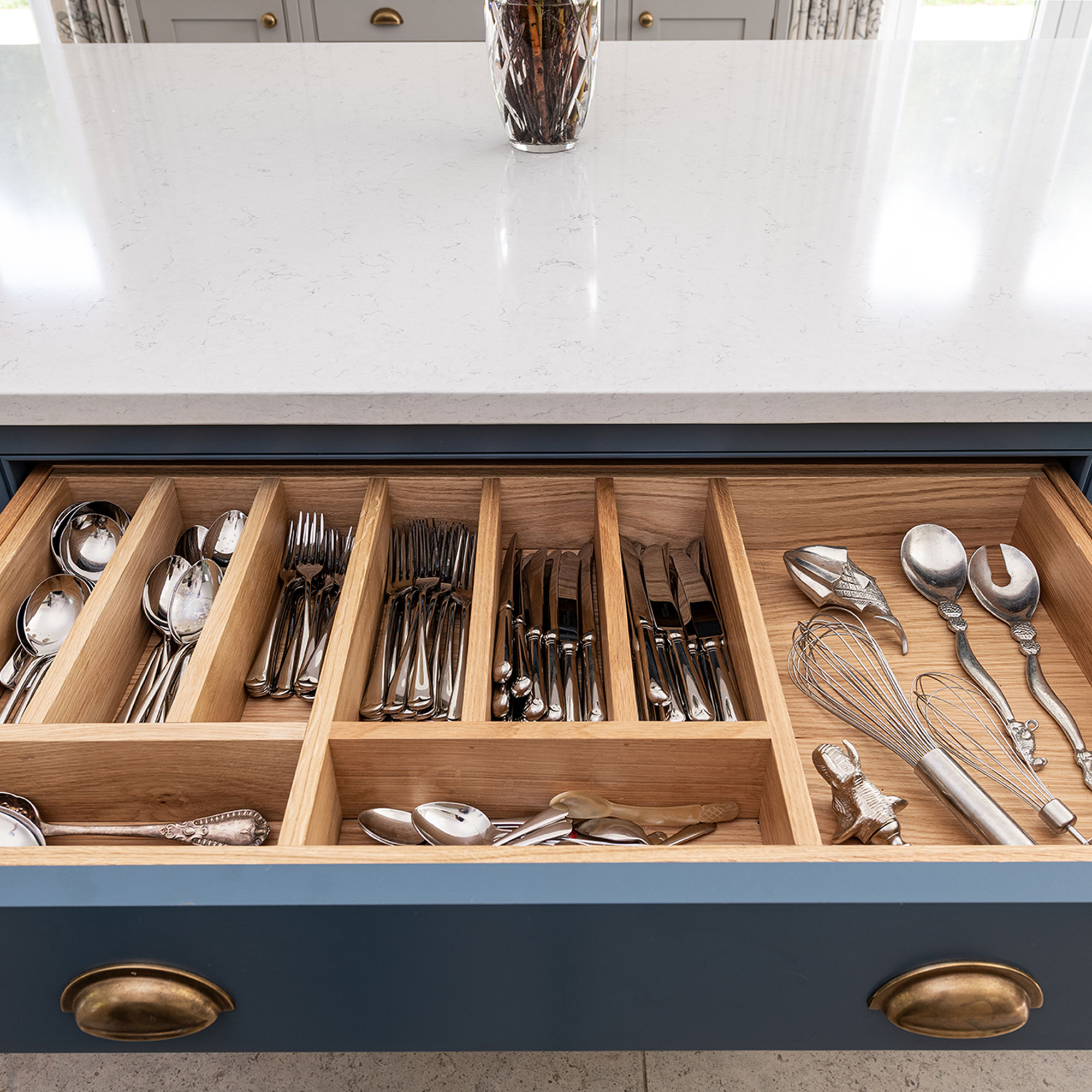
Divide your collection into sections, for example, cutlery, baking tools, serveware, sharp items such as peelers and scissors.
‘Think about how many of each item you realistically need i.e. does a family of four need 16 soup spoons?’ asks Kate Kate Galbally, a member of the Association of Professional Declutterers and Organisers and Founder of Better Organised. ‘Be mindful of overlap – do you still need a cheese slicer if you already have a box grater that has a slicing surface?’
Longer items such as rolling pins or salad servers can be stored horizontally in larger drawers, but if you need to fit them into a smaller drawer then consider a vertical slot to make room from them, using the corners of the drawer to store small items.
You don’t have to spend a fortune on new dividers. ‘Simply repurpose Tupperware (without lids), ice cream tubs or takeaway cartons to contain fiddly smaller items such as silicone spoons, measuring spoons and corn-on-the-cob skewers,’ adds Kate.
6. Opt for vertical dividers
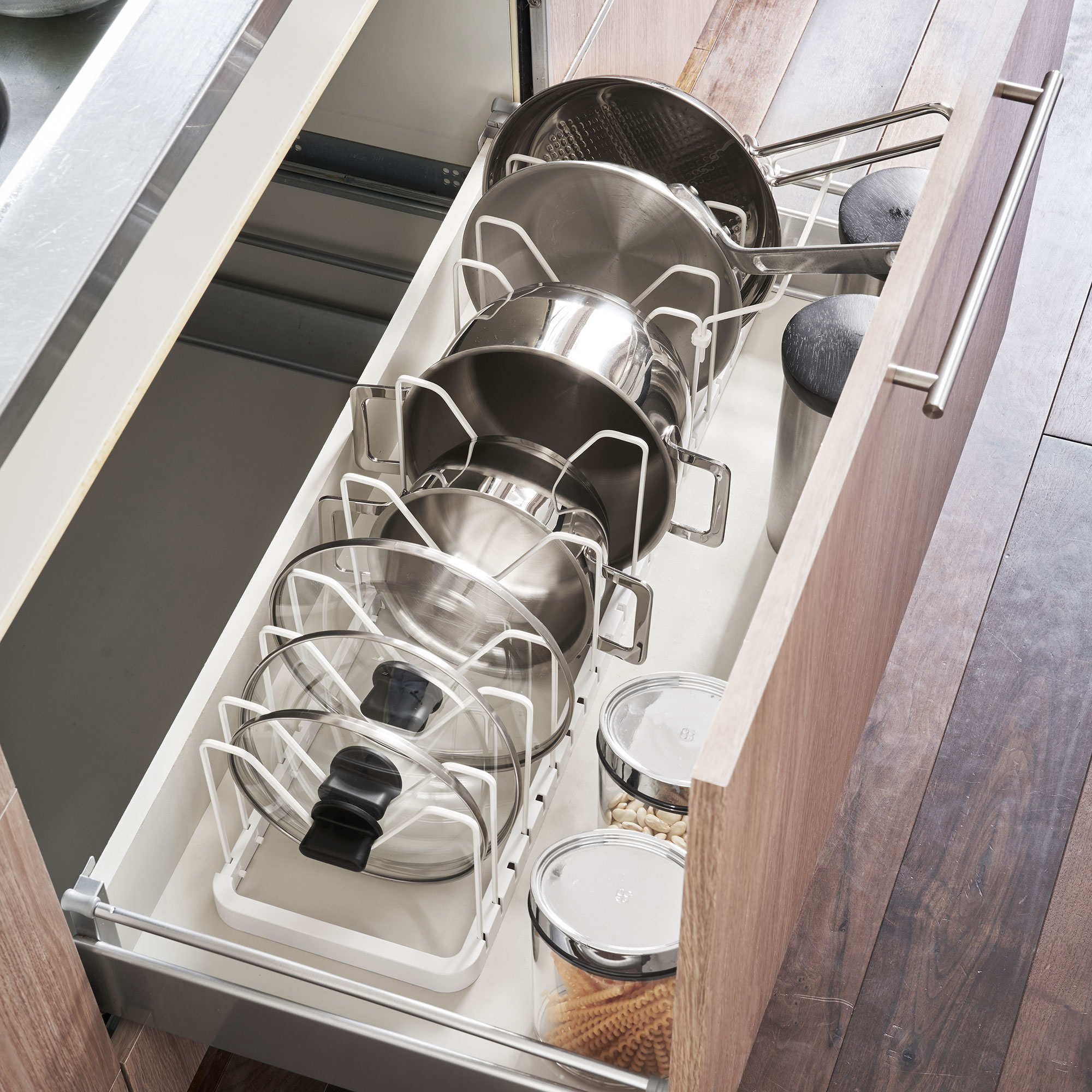
Certain items lend themselves to being stored vertically – chopping boards, baking trays, muffin pans, etc, and organising kitchen drawers to display them vertically makes locating what you need hugely convenient, as well as saving space.
And it’s not just cookware that can be organised this way. ’Storing vertically works particularly well for food such as packet mixes and snacks,’ says Kate Galbally. ‘It can help to minimise waste too – if items are stacked on top of each other the ones at the bottom can be forgotten, but vertically you can keep tabs on what you have. Other items that can work well stored vertically are tea towels, tablecloths, napkins, plates and bowls and pots and pans (the bottom of the drawer can be lined to prevent them sliding).’ A Place for Everything's Extendable pan lid and flying pan organiser, £49 is the perfect solution.
7. Try a new home for spices
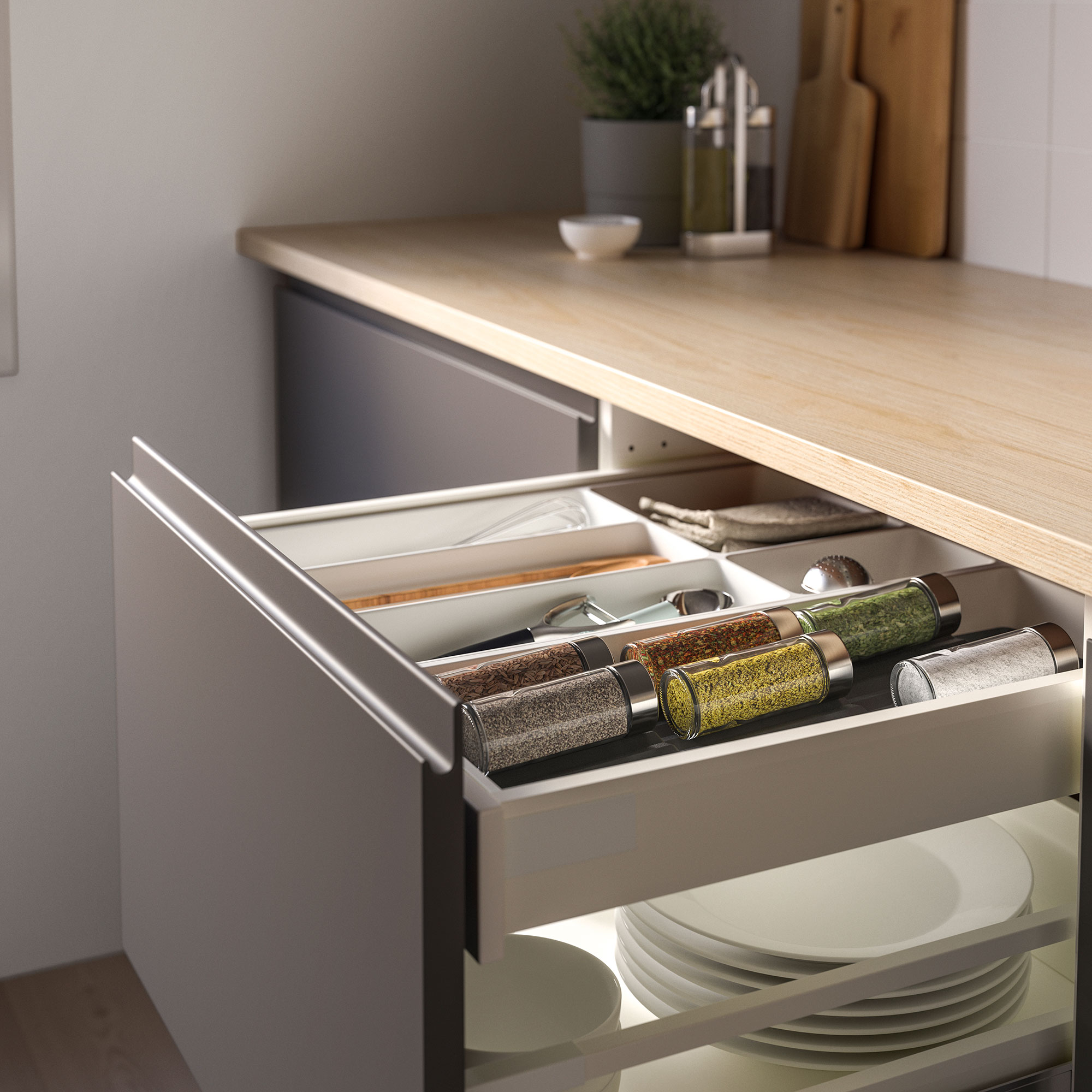
Organised in a drawer, spices are easy to see, will keep longer in the dark and if located close to where you cook, quick to grab. Store jars upright with labels on top, a container or divider will prevent them sliding. In a shallower drawer lay them flat with the labels upright. Consider an inlay to stop them rolling around. Either organise them into alphabetical order, or group them into use such as baking, Mexican, Italian, etc. The Uppdatera spice rack, £5, IKEA is a great storage option.
8. Keep knives safe and sound
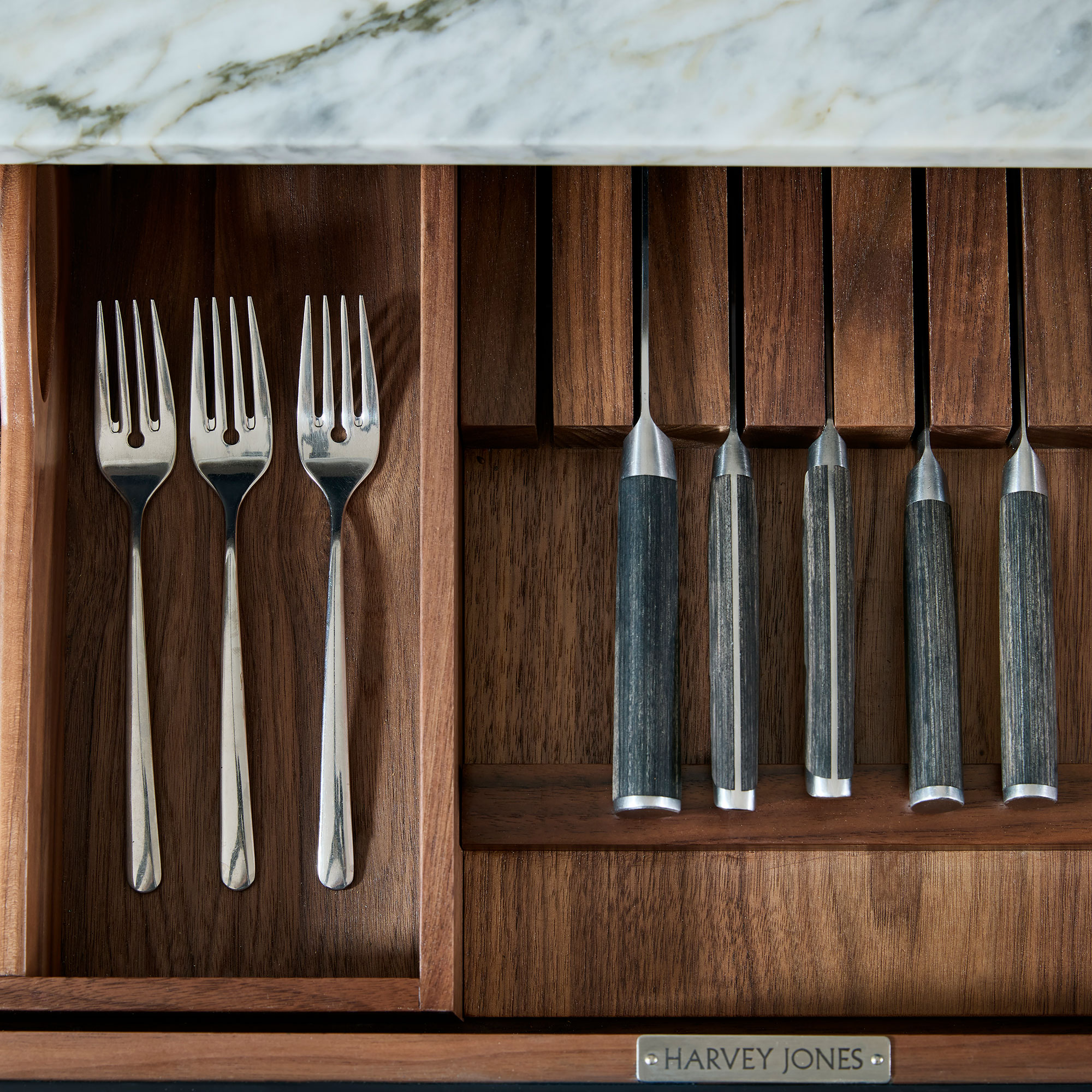
Store knives safely in a dock, so that the blades are kept out of the way of fingers, and the handles are pointing in the right direction, ready for use. Keep knives located close to where you prep meals so you have them to hand.
9. Decant food into clear storage
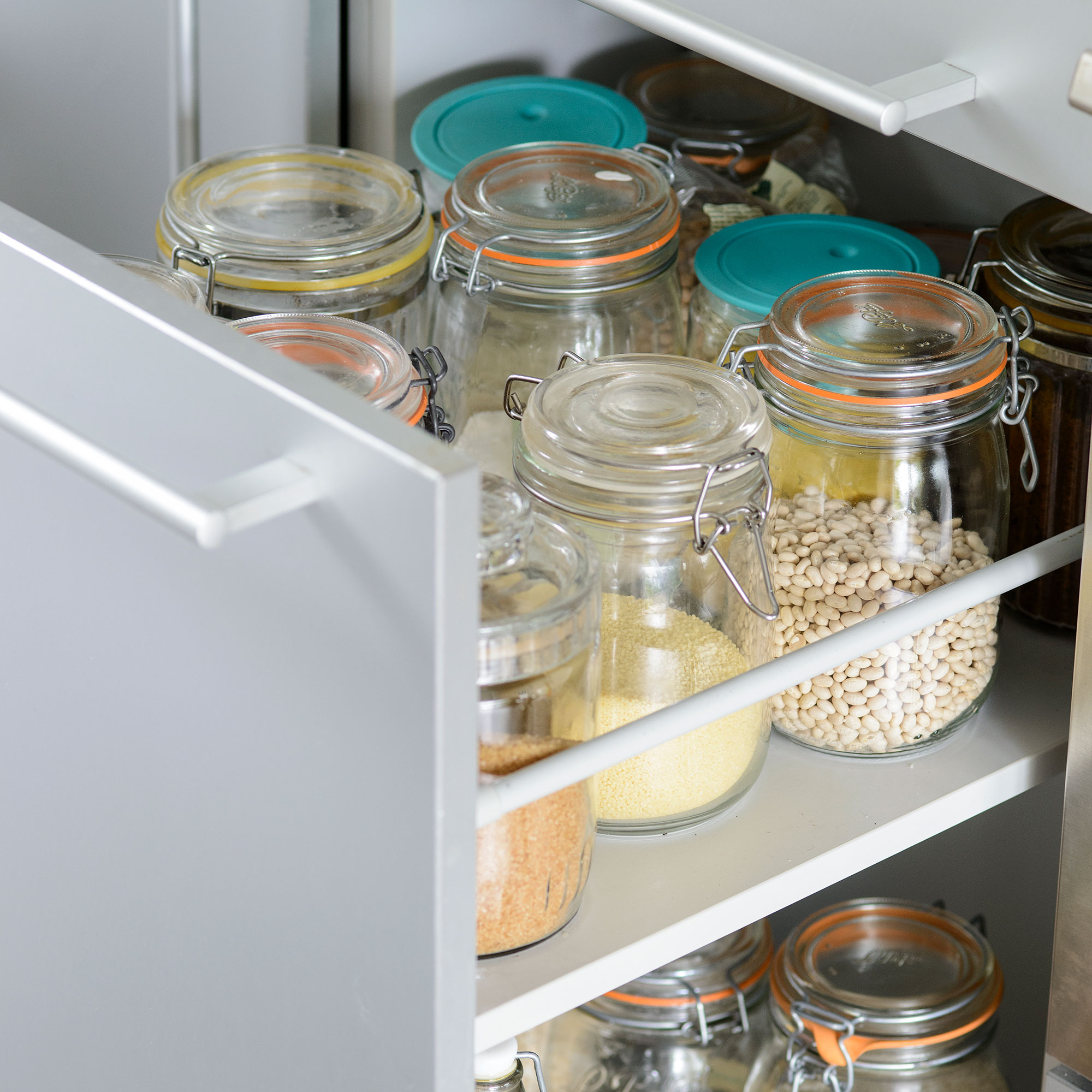
Storing dry goods in clear containers when organising kitchen drawers makes them easy to reach when you need them, and quick to see what’s running low when meal planning.
‘Drawers are great for food storage,’ says Dave Young, founder of Husk Kitchens. ‘By choosing multiple food containers that fit snugly in the drawer and labelling every pot on the lid, drawers provide a much easier way to keep day-to-day items such as pasta, flour, herbs and spices close to the hob and at hand.’
And you don’t need to stop at things like flour and pasta – store snacks and small packets vertically in small clear containers that you can easily lift out of the drawer.
10. Designate a drawer for the kids
Help kids become more independent by keeping all of their items in a low drawer that they access easily. Keep their plates, bowls, cups and cutlery in there so they can help at dinner time. If you have the space, keep their food containers and lunch boxes there too.
11. Convert cupboards into drawers
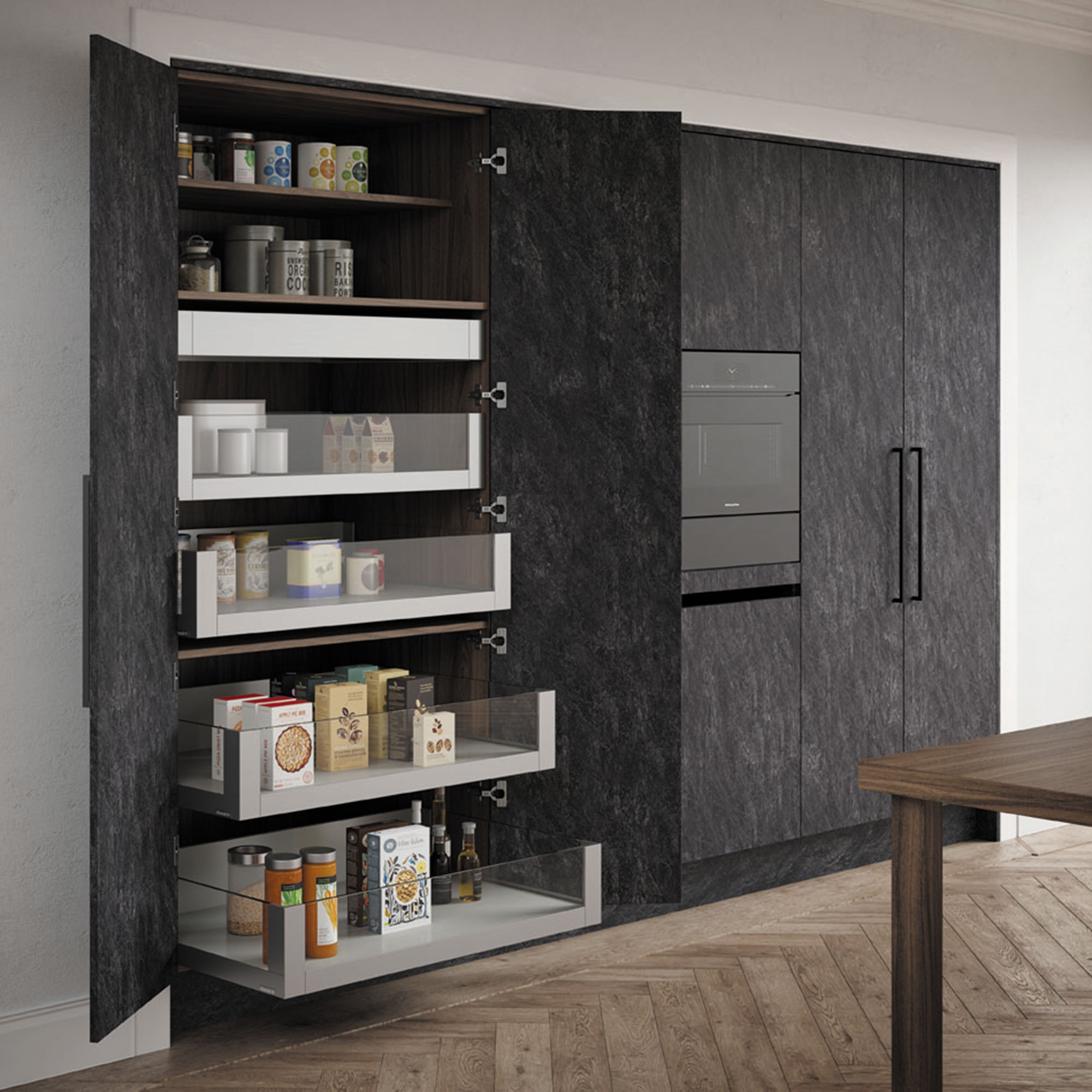
If you love the idea of drawers but prefer the look of cupboards consider fitting them behind a door. Retrofitting them in existing cupboards is fairly simple if a new kitchen isn’t on the horizon. Either fit small drawers within the unit space, then hide them away behind the existing door, or look into how to fit a drawer onto the bottom of a cupboard front, converting it into a deep space ideal for pots and pans.
12. Create a pull-out recycling station
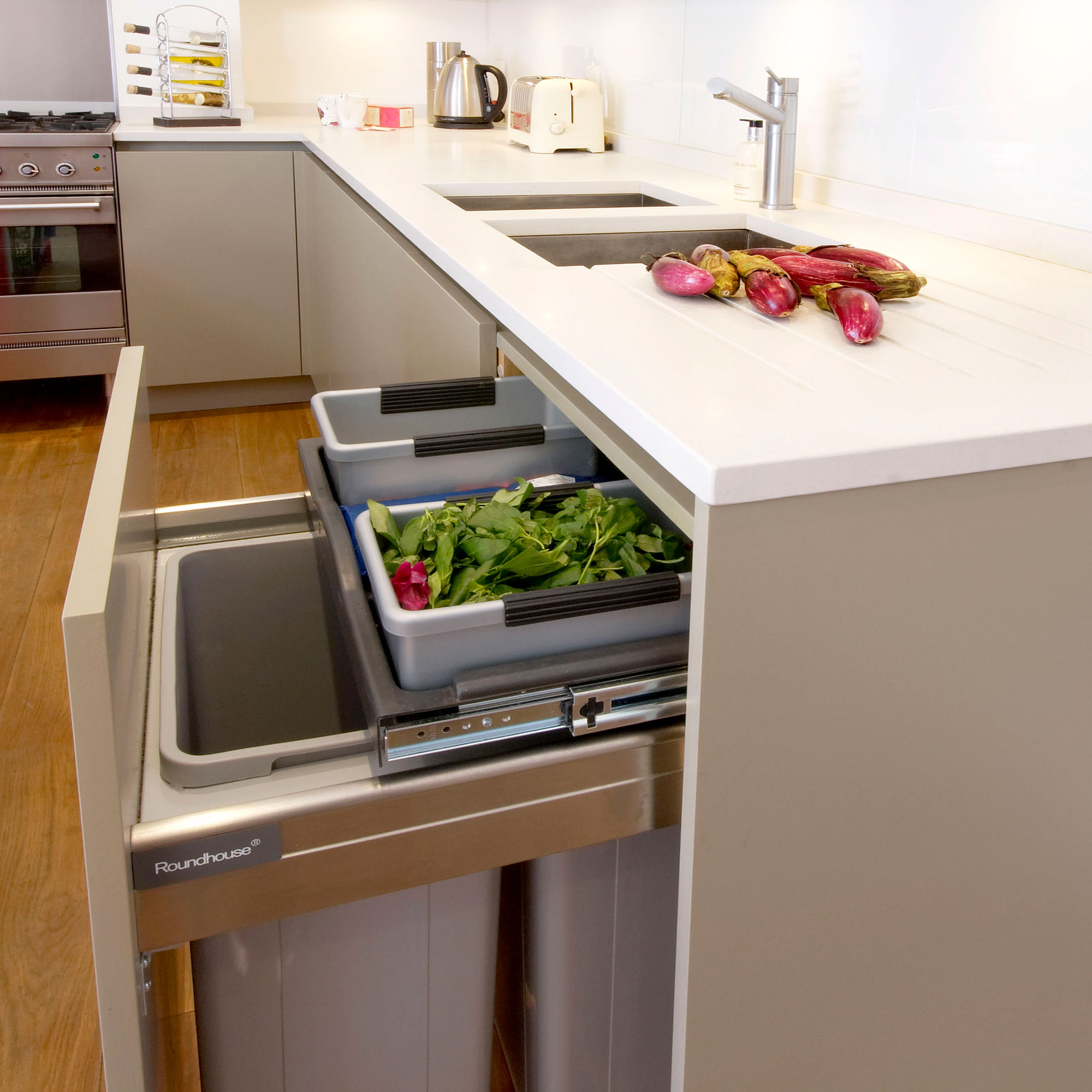
‘Drawer storage is perfect for hiding recycling,’ says Dave Young, founder of Husk Kitchens. ‘By adding kitchen bins into the drawers for rubbish and recycling, all discarded food and wrappings can be swept away easily, keeping surfaces clear for speedy food preparation.’
What should I put in deep kitchen drawers?
Deep kitchen drawers are well suited for pots and pans, but also great for storing things vertically such as plates and bowls or trays and boards. ‘Storing vertically is a great way to utilise the full depth, making the most of the storage space and helping you to see the contents at a glance,’ says Kate Galbally, APDO member and Founder of Better Organised.
How do you store food in drawers?
‘Shallow packets such as crisps work particularly well,’ says Kate. ‘If you have deeper drawers, these are ideal for dry ingredients, such as rice or pasta. An ice cream tub can be a simple but effective container to store snacks within a drawer. Take items out of bulky packaging but if a box fits neatly, simply tear off the cardboard flaps from the top so that you can see the contents at a glance – ideal for coffee pods or snack packs.’
How do you stop kitchen drawers getting cluttered?
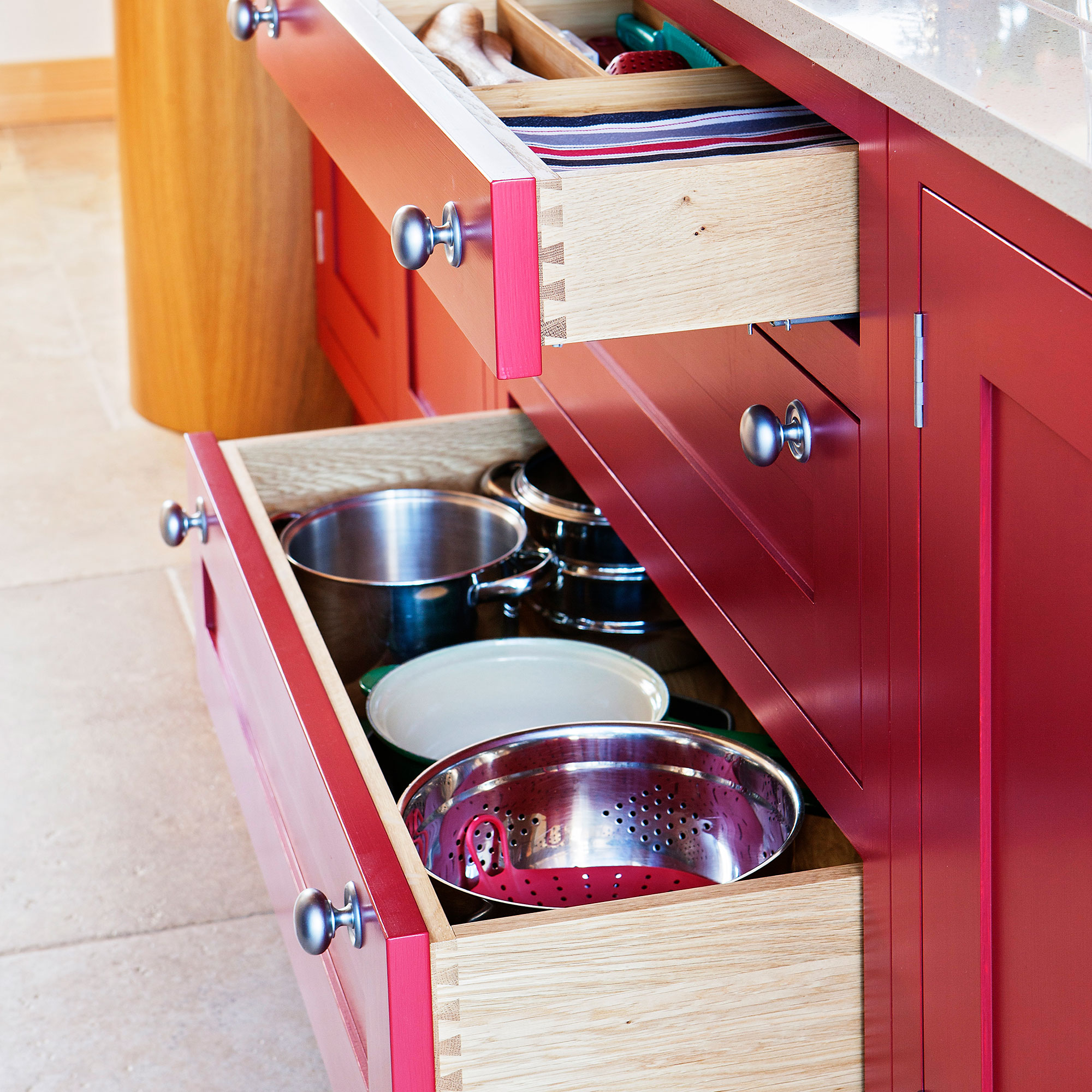
‘Try to avoid having non-kitchen items in your drawers – this can be a recipe for a junk drawer developing,’ advises Kate. ‘Using dividers and repurposed storage can help set storage limits and stop quantities getting out of hand. By having a home for everything and returning items to the correct drawer it means there is less chance of things being misplaced. The ‘one in, one out’ rule is a good one whether it is crockery, utensils or food. Keeping the flow of items relatively balanced can stop things from accumulating and areas becoming cluttered.’
Laura Higgins is a freelance journalist who has had a career within the magazine industry for twenty years. Laura worked for over a decade on Your Home magazine where she was Lifestyle Editor, writing about everything from interiors and decorating to household advice, kitchen appliances and recipes. Since launching her freelance career in 2020 she has written for a variety of titles and brands, including Future titles Style at Home and Ideal Home. As well as writing about homes, Laura also works as a food stylist and has styled photoshoots for several well-known brands.
-
 5 signs you’ve taken decluttering too far — and how you can pull yourself back, according to organisation experts
5 signs you’ve taken decluttering too far — and how you can pull yourself back, according to organisation expertsYou might have to start resisting the urge to purge
By Lauren Bradbury
-
 What is the Party Wall Act 3m rule and is it something you should be worried about? This is what the experts say
What is the Party Wall Act 3m rule and is it something you should be worried about? This is what the experts sayDon't get caught off-guard by the Party Wall Act 3m rule — our expert guide is a must-read
By Natasha Brinsmead
-
 Shoppers can’t get enough of The Range’s lemon tree, but I’ve found an even cheaper bestseller at B&Q - it’s perfect for a Mediterranean look
Shoppers can’t get enough of The Range’s lemon tree, but I’ve found an even cheaper bestseller at B&Q - it’s perfect for a Mediterranean lookWelcome the summer with this glorious fruit tree
By Kezia Reynolds